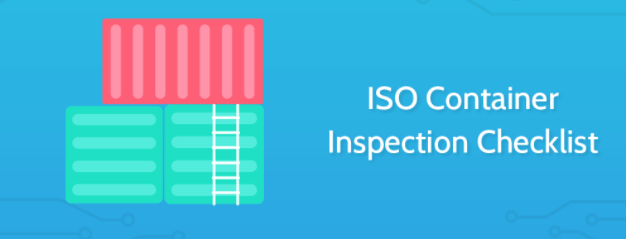Container Safety Inspections – Different safety tests PES , ACEP
ACEP is a container inspection method that effectively secures containers, and it is important to know what is behind them. Containers are typically created at the request of the container owner from the manufacturer. All containers must be built to ISO and CSC standards at the basic level in order to be eligible for international shipping. Container customization is built on these basic standards. When the container is in its final form, it is categorized according to ISO and given a container ID number. This number should be printed on the container’s CSC plate.

Table of Contents
Compare inspection of PES and ACEP containers
It is the owner’s responsibility to arrange for the container to be inspected on a regular basis to keep it in good condition and check for defects and potential hazards. If the container is leased, responsibility is transferred to the borrower. There are two types of inspections available: the periodic inspection system (PES) and the approved continuous inspection program (ACEP).
Read : Different Types of Shipping Containers Available to Buy
Both of these tests are very similar except for how often they are performed. If the container is subject to PES, the first inspection will be done 5 years after the date of manufacture and every 30 months thereafter. Apart from regular inspections every five years, ACEP also checks for major repairs, refurbishments, or when using the container for purposes. However, the container should not be used without inspection within 30 months.
What do I need for ACEP container inspection?
To ensure container safety, the IMO (International Maritime Organization) has implemented the ACEP-Active Continuing Inspection Program through the CSC (1972 Safety Container Convention) to inspect containers on a regular basis. ACEP regulations are listed on the CSC and are enforced by the IMO Subcommittee (DSC) on Dangerous Goods, Solid Cargo and Containers under the jurisdiction of the Maritime Safety Commission.
The ACEP identification number has been assigned by the national administrator to containers that meet certain requirements and has been published since 2010. The National Government also delegates the task of issuing ACEP to the Ship Class Association, a reliable and reliable company. Specialized field for conducting container surveys. The IMO has not released any documentation to help identify these companies, but it does help the local maritime bureau or BIC (Bureau International des Containers) find an ACEP issuing agency.
BIC hosts the Global ACEP database with the support of Member States. This information is available worldwide to anyone interested. This is required by ISO and international customs treaties. Members can easily search the online database for ACEP status and be notified whenever ACEP content changes. The database is constantly updated for new members and information. Administrators can easily find the container using the ACEP number and avoid shipping delays.
Why choose ACEP over PES?
The inspection period is frequent and consistent.
ACEP tests are so frequent that minor injuries can be repaired faster rather than waiting another 30 months.
With ACEP, the ACEP ID does not change with each test and the CSC plate remains valid, so there is no need to update the CSC plate immediately.
The CSC plate remains valid, so there is no risk of penalty for breach of CSC.
The ACEP online database is automatically updated to notify the container owner of the date of the next inspection.
What happens during the ACEP test?
First, a well-informed, skilled, and competent expert must inspect the container to determine if the container is defective and can cause an accident. The container must be available to an inspector who has emptied and cleaned it. To see the container from below, you need to lift your belongings. The container should also be in a safe, well-lit location with all the tools needed to properly test the container.
The inspector is responsible for inspecting the outside and inside of the container in detail. If the container is loaded during the inspection, the inspector can request the container to be unloaded. In some cases, inspectors may require partial removal of insulation if they suspect that it covers some defects. A skilled inspector basically has to look for the next element in the container:
- Corrosion
- Welding condition
- Riveted condition
- Mechanical damage
The condition of all structural components such as corner fittings, end frames, forklift holdings, floors and roofs.
What follows the test? Container Safety Inspections
At the end of the inspection, the inspector stated in writing that the container was found to be safe and not life-threatening during the inspection if it was found to be flawless and non-threatening. To do.
The container owner or borrower is informed of the following information:
- Container ID on the CSC plate
- Examination date
- Test method carried out
- The date on which the next check should be done, based on the current state of the container. This date must not exceed 30 months from the test date.
- Information about inspectors and their employers.
The owner or borrower of the container is obliged to attach the inspection date on or next to the CSC plate. If an inspector discovers that a container is defective, he must state whether it is unsafe to load the container or whether it can be moved to another destination as an empty container. The owner or user should be fully informed of the disadvantages.
Keeping records from ACEP container Safety inspections
The owner of the container should keep all the documents and make them available at the next inspection. If the container is leased or modified to another owner at that time, you will need to copy the document and give it to each individual. A record-keeping system should be in place to store the container ID, inspection date, inspector details, inspection name and location, and results.
